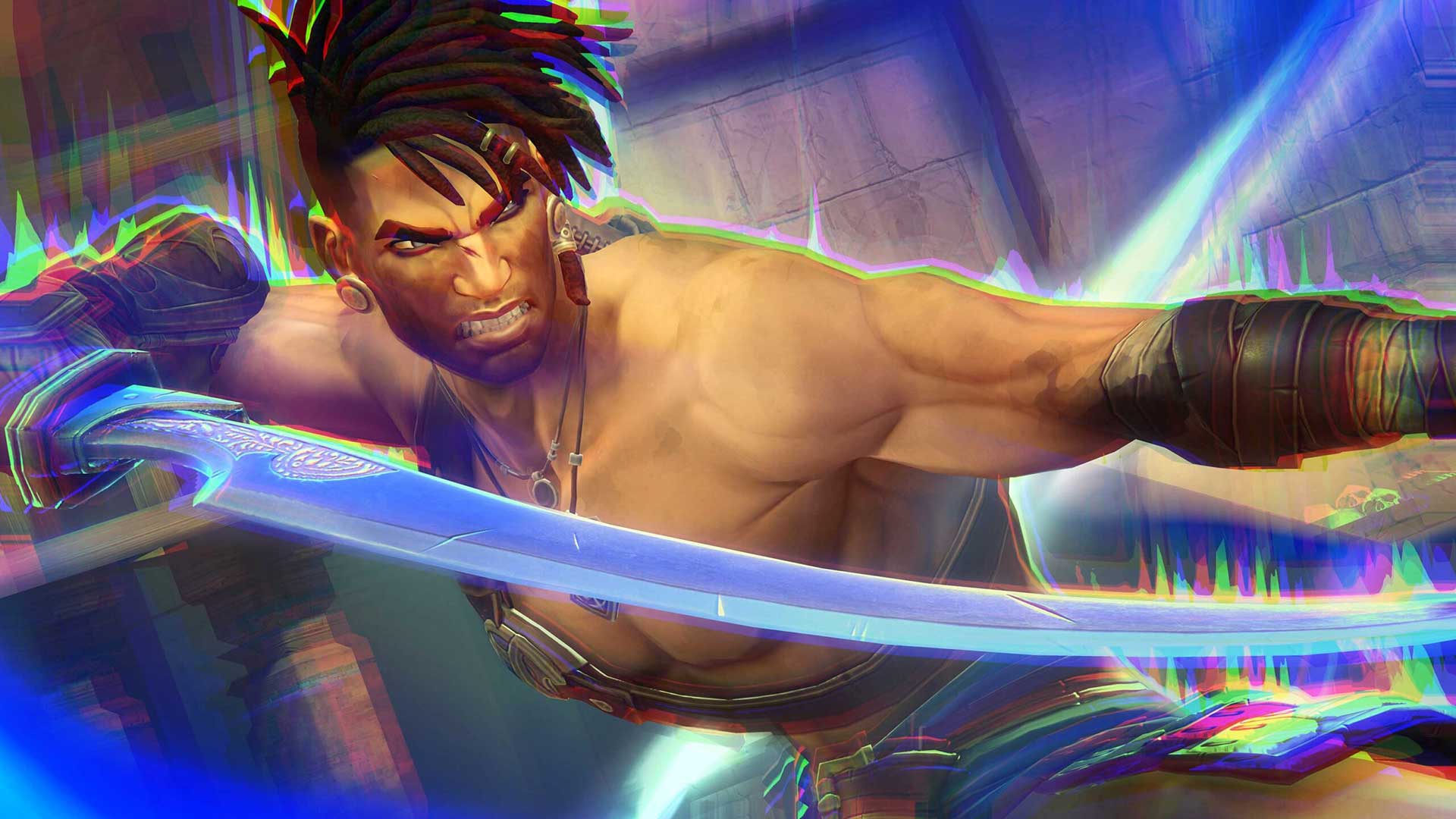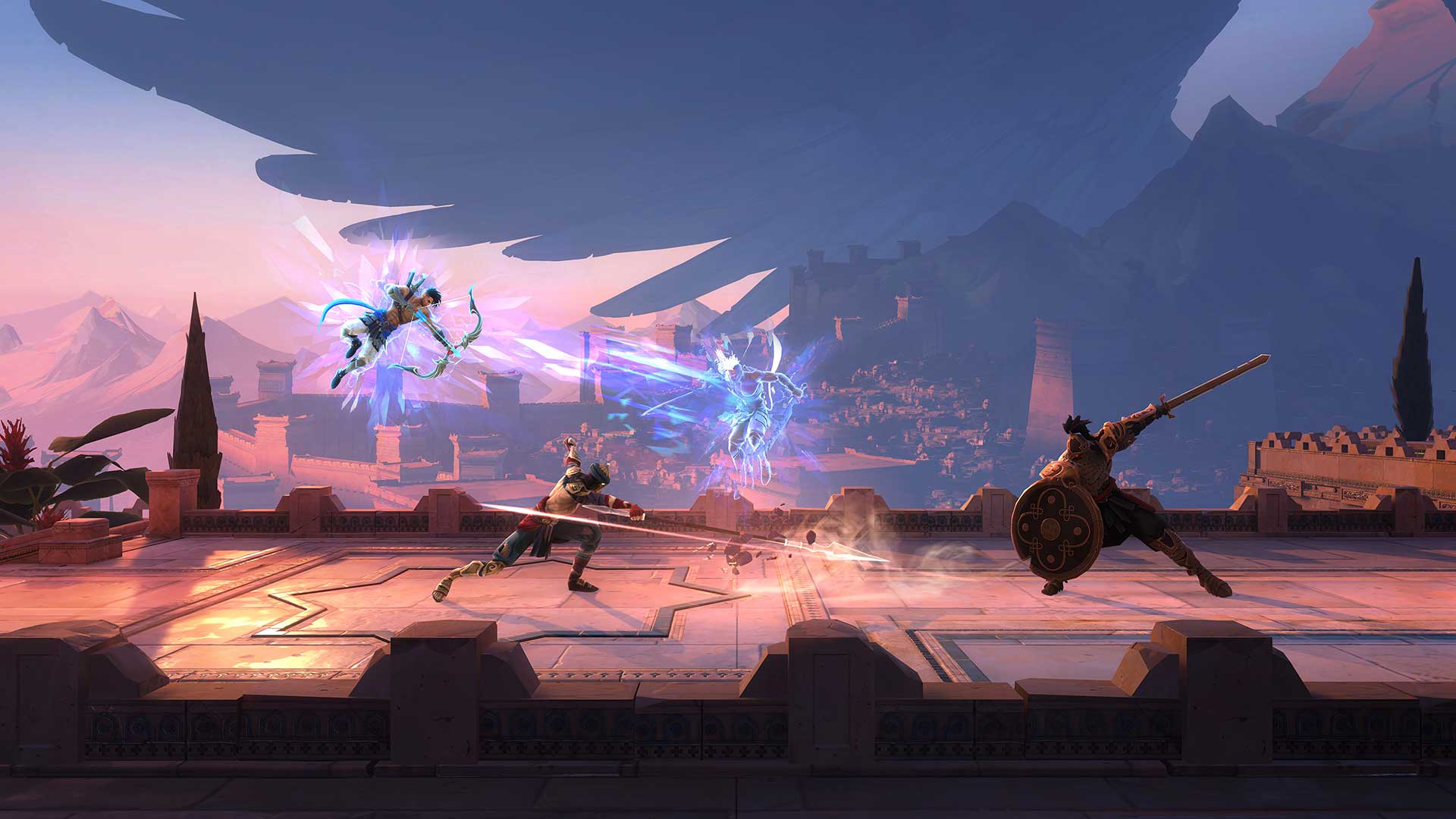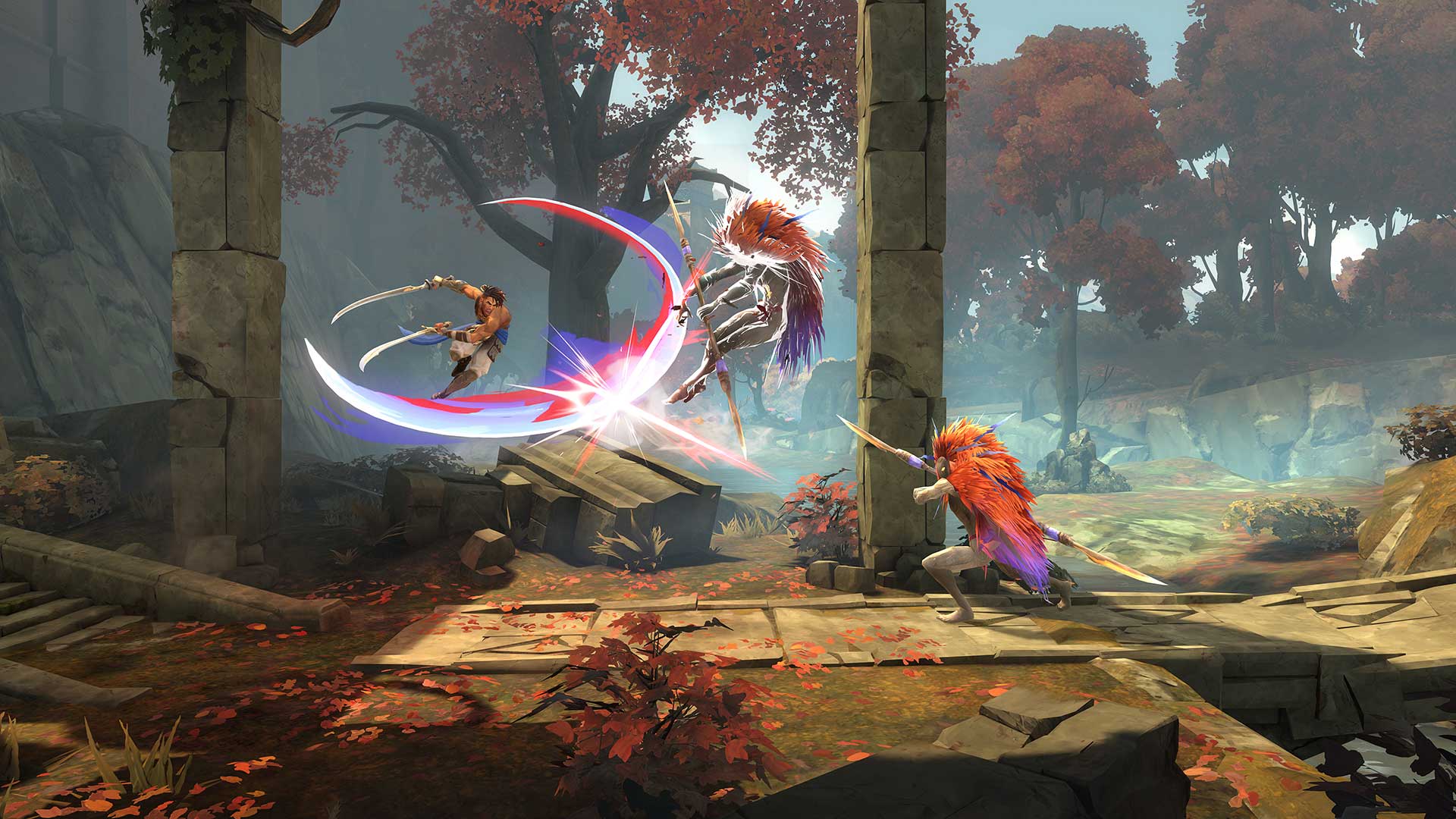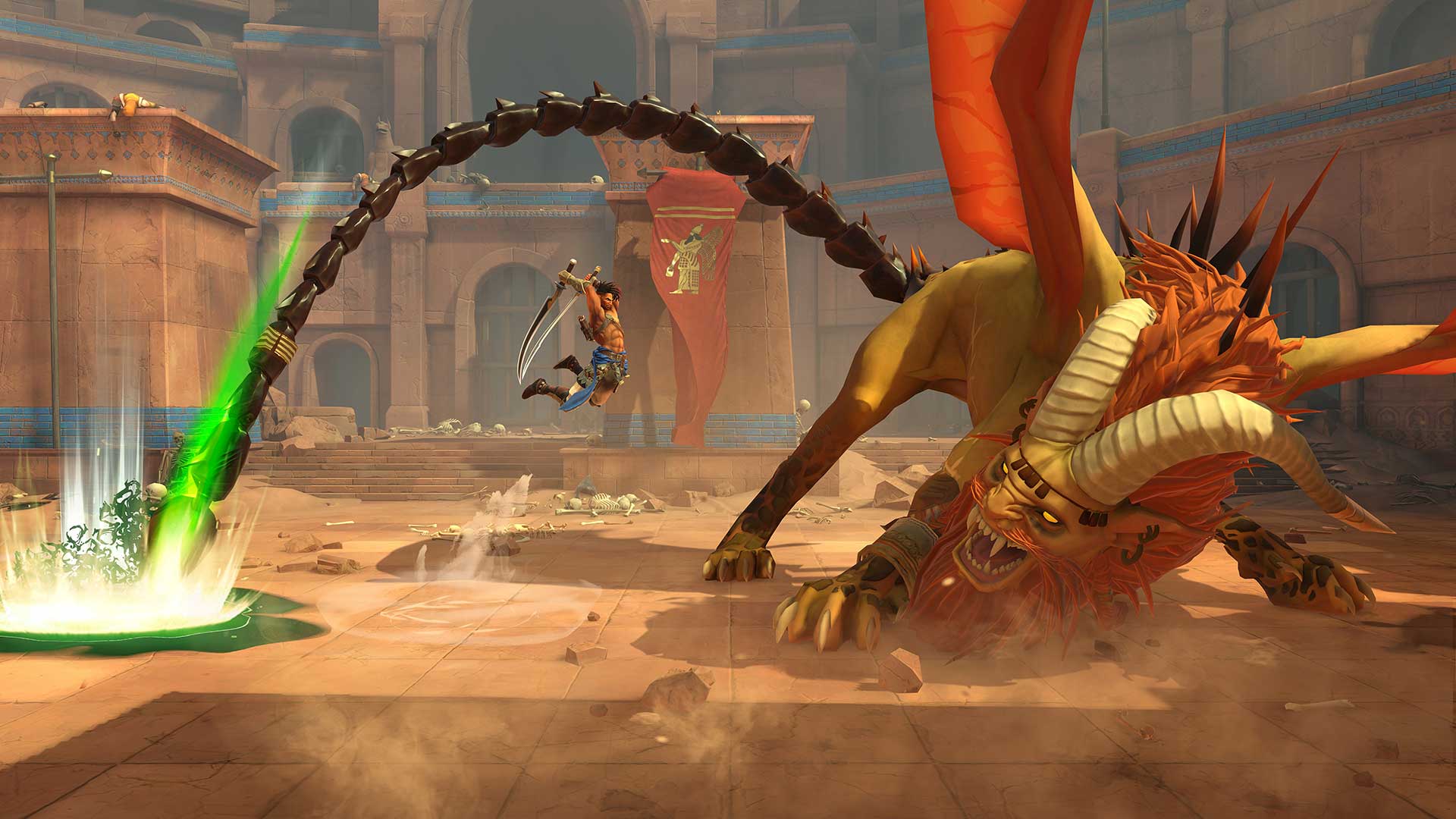
When Prince of Persia: The Lost Crown was first unveiled at last year’s Summer Game Fest, the response was… mixed. Those who’d gotten to play it were pretty optimistic, but audiences back home weren’t sold. After beloved 3D Prince of Persia games like The Sands of Time and The Warrior Within, people scoffed at a 2.5D iteration, especially since this is the series’ first release since 2010’s The Forgotten Sands.
But even ignoring that Prince of Persia‘s roots actually lie in that sidescrolling format, people haven’t been giving enough credit to developer Ubisoft Montpellier. With its decades of experience making Rayman games, including 2013’s criminally overlooked Legends, as well as the likes of Beyond Good & Evil and Valiant Hearts, there’s a lot of pedigree behind the latest Prince of Persia. And sure enough, that talent has more than paid off with The Lost Crown, resulting in an experience that is easily Ubisoft’s best game of the past several years and a fantastic start for 2024.
The warrior within
The Lost Crown‘s most immediately noticeable change lies in its narrative. In a first for the series, you don’t actually play as the titular regal, but rather, the man responsible for protecting him. As Sargon, a member of the elite royal guard known as the Immortals, you’ll have to venture to the mythical Mount Qaf to rescue the kidnapped prince, only to discover a far more sinister conspiracy.
Given that this inciting incident happens so quickly in the campaign, The Lost Crown unfortunately doesn’t get to spend much downtime developing Sargon’s relationships with either the prince or the Immortals. While you’ll sporadically run into the latter as you journey through Mount Qaf, there’s just not enough there to make their eventual conflict with Sargon — which arises due to story reasons I won’t spoil — hit quite as hard as it should. Still, the dialogue can be pretty entertaining and the voice cast turns in sharp performances.
The highlight of the story, undoubtedly, is Sargon himself. By wisely focusing on a humble warrior instead of a prince, Ubisoft Montpellier gives us a solid arc in which our cocky and altruistic lead gradually learns what it means to become a hero. His softer side also manifests through endearing optional conversations with NPCs like Fariba, a plucky girl who helps guide him through Mount Qaf. Sargon’s eminent likeability kept me invested in the story and made up for some of the more underdeveloped supporting characters.
Rolling back the clock
The other key factor that distinguishes The Lost Crown from its predecessors is its aforementioned 2.5D structure. Over the past year, Ubisoft Montpellier hasn’t been shy about discussing the game’s Metroidvania inspirations, and you can feel that across Mount Qaf. Indeed, each of the sprawling summit’s locales features all kinds of traps, gates and other obstacles that you’ll need to revisit once you’ve acquired new abilities.
Here, Ubisoft Montpellier gets to have a lot of fun in reimagining classic Prince of Persia time manipulation powers in a 2D framework. At first, they’re fairly basic, like an air dash that’s represented, in a nice touch, through a wall-running animation similar to the one seen in previous games. Later, however, these become much more elaborate and affect the world itself, including a special vision that makes certain objects like walls disappear and reappear when toggled and a pocket dimension in which you can entrap bombs and even enemies to later launch in any direction. There’s a wonderful variety of abilities here, and it made progressing through the story to discover them all even more enjoyable.
All of these powers enhance the already exceptional core mechanics. In fact, I’d go so far as to say The Lost Crown‘s platforming is some of the tightest I’ve experienced in recent memory. Ping-ponging Sargon between well-designed and appropriately challenging arenas featuring twirling buzzsaws, spiked walls and narrow platforms is an absolute joy, and that’s before you mix in all of the aforementioned time and space abilities.
Meanwhile, Mount Qaf itself is wonderfully diverse, featuring biomes ranging from mysteriously eerie forests and radiant regal palaces to dank, acid-filled catacombs and grand, haunted libraries. But perhaps my favourite location was the stormy seas; altered by time during a massive battle, you have to jump, dash, slide and warp your way through pieces of broken ships and the frozen pirates, monsters and lightning bolts scattered among them. During your travels, you’ll also come across NPCs who give out a welcome assortment of sidequests that include hunts, platforming challenges and finding hidden riddles, all of which provide currencies for upgrades and Amulets (more on those later), further encouraging exploration.
Float like a butterfly, sting like a Manticore
If The Lost Crown was focused purely on Metroidvania progression, it would have been worth playing for that alone. That said, the game also features some of the snappiest and most satisfying combat I’ve seen in a 2.5 game — a deceptively simple system that belies a surprising amount of depth. At first, Sargon can only carry out a basic three-hit sword combo, although this can be tweaked by directional inputs, including launching enemies into the air.
However, you’ll later unlock a swath of items that greatly expand Sargon’s arsenal, including a bow and a bladed disc known as a chakram. Mixing these in between regular attacks on their own is effective, and that’s before you factor in Amulets, unlockable gear that enhances Sargon’s combat repertoire. Some provide passive abilities, like improved potion efficacy or a one-use revive upon death, while others extend Sargon’s combos, increase the range and duration of Chakram throws or even cause enemies to explode upon defeat.
The robust array of Amulets means you have quite a bit of flexibility in how you want to tailor Sargon. This system, coupled with the time powers, makes the combat truly come alive. Particularly skilled players can wail at an enemy on the ground, launch them up high, juggle from afar with arrows and Chakram, leap up, slash some more, dash towards them for another flurry of blows and then hammer them to the ground. What’s more, the unlockable time power to leave an ethereal version of Sargon that you can then warp back to means you can place a marker either behind or above enemies for even more creative back-and-forth combos.
Things only get more dynamic thanks to the parry mechanic. Well-timed parries will fill Sargon’s Athra metre, which lets him perform super moves. When parried, certain glowing attacks will also let Sargon execute a powerful counter. There is, however, quite the risk-reward element here. For one, taking damage will actually reduce your Athra, adding greater consequence — and, therefore, more meaningful benefits — if you manage to pull off the parry. There are also three tiers of Athra abilities, so you have to constantly weigh whether it’s worth executing a quick lower-level attack or risk saving up for a stronger alternative or, even, one that can heal you.
These kinds of considerations prove especially crucial during boss battles, which make for some of The Lost Crown‘s most pulse-pounding challenges. Some of these are commendably pulled from Persian lore, like the nimble Manticore and a towering cobra, while others are equally tense duels against superhuman opponents. Even on a 2D plane, the sense of scope of these battles — conveyed through gloriously flashy and over-the-top anime-esque animations and an electrifyingly badass score from Ori and the Blind Forest‘s Gareth Coker and Iranian singer and composer Mentrix — is simply incredible.
A Metroidvania for everyone
If any of that sounds overwhelming, especially as a relative newcomer to Metroidvanias, Ubisoft Montpellier has thankfully got you covered. Commendably, the developer has added a suite of options through which you can customize the experience. At any point, you can choose an optional ‘Guided’ mode that steers you in the right direction, as well as change the difficulty level for both combat and exploration (including specific parameters for the likes of parry timing and enemy health). Throughout Mount Qaf, Fariba will also (almost magically) pop up in each area to sell you maps or other hints for further assistance.
And in what’s a genuine innovation in the year 2024, The Lost Crown supports an in-game screenshot mechanic that lets you snap images of currently inaccessible chests or areas and mark them on your map. One of my biggest frustrations in games is forgetting hours about where I should now revisit with the right tools or abilities, so this is an utterly brilliant solution to this problem.
Overall, the ability to mix and match these options at will and not be locked behind a certain difficulty, alongside the wide assortment of accessibility features, ensures that players of all skill levels can jump into The Lost Crown.
A crowning achievement
I went into Prince of Persia: The Lost Crown quite excited and came out blown away. While I wish some of the supporting characters were better fleshed out, Sargon himself proved to be an effective early hook. From there, I was constantly impressed by the thrilling combat and platforming, eclectic lineup of powers and intricate design of Mount Qaf itself. Even after spending 16 hours beating the game and exploring a good chunk of the world, I’d only reached 64 percent completion, so I’m looking forward to going back.
Above all else, Prince of Persia: The Lost Crown is yet another reminder to not judge a book by its cover. Like its lead, the game comes from humble beginnings and eventually becomes something truly special.
Prince of Persia: The Lost Crown will launch on PlayStation 4/5, Xbox One, Xbox Series X/S, Nintendo Switch and PC on January 18th. Ubisoft+ subscribers and owners of the Digital Deluxe Edition can start playing on January 15th. A free demo is also now available.
Image credit: Ubisoft
MobileSyrup may earn a commission from purchases made via our links, which helps fund the journalism we provide free on our website. These links do not influence our editorial content. Support us here.






